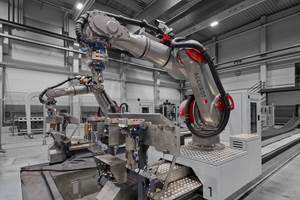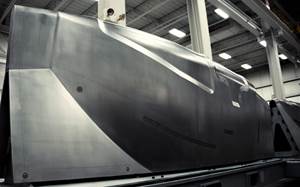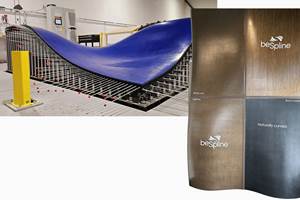Seeking and finding support within the composites industry
Russell Emanis of Innegra Technologies cites those who have helped him during his composites career as inspiration for doing the same for others.
My career in the composites industry started in my early days as a surfer, when I received all kinds of help and support from other surfers, who showed me and then taught me composite repairs. Heck, making repairs to my surfboard in the early 1970s was as complex for me, then, as carbon fiber thermoplastics are today for most of us. I had no clue what to do back then, much less any money to have someone fix the catastrophes I created as I learned. You know … lots of splash and burns.
The people who helped me so long ago inspired me to do the same in my career. And I’ve always known that if I needed help, I could ask and get the answers I needed, from sales reps, manufacturing reps and friends I have made over many years. They will all help if you just ask.
Having spent 40+ years working with composites, I’ve made my share of mistakes. Sometimes I’ve encountered what seemed like endless challenges on projects. "Live and learn," they say. And, learn I did. Everything about composites has changed since those early days. But, some things will never change. Composites people are among the most innovative and forward-thinking people on our planet.
Technical support: It’s there to be used
In today’s fast-paced process development and material enhancements environment, technical support is a necessary part of today’s composites world! We have small to very large companies working, relentlessly, to master the next, best processes and materials. Ever-increasing pressure for faster curing, lighter weight and, dare I say, "cheaper," components and processes seem to be the current buzz.
Having been exclusively in a technical support role during the past four years, I have worked with clients all over the globe to help them meet their goals. There are some notable scenarios that seem to be common. In almost every instance, the client has made an attempt — if not several attempts — to integrate new materials before reaching out for help. Or, in many cases, clients have just given up, licked their wounds and then gone back to the previous composites or the legacy materials they were using.
Failed attempts and outright surrenders aren’t necessary. Remember: things are changing every day. Keeping up with it all is almost impossible. There are no bad questions. For every new enhancement for composites, there are people ready and willing to help.
Material suppliers, distributors and materials manufacturers recognize that technical support is necessary. Most have worked hard to build teams of support professionals specifically tasked to help processors make technology transitions much less painful.
I am confounded at how infrequently these fantastic resources are used. In some of the most challenging processes, even at companies recognized for highly advanced composites parts, I have found that with the integration of a new material — be it soft goods or resin systems — some of the most basic things are overlooked by some of the most highly skilled people. Simply making changes to materials and using the same processing usually does not work. Sadly, the blame is almost always placed on the new materials.
Reaching out for the right support
But when looking at any change, it’s critical that whoever you reach out to for support has a clear understanding of your product, your current processing capabilities, your goals and the quality issues you currently deal with before you initiate trials.
An example I know of concerned the fabrication of bladder-molded parts with surface quality issues. In this case, a consultant was called to help integrate a new process and new materials to produce a lighter, tougher, more impact-resistant product, but he was unable to get an acceptable surface finish. Before the project was abandoned, I was called in, and a simple adjustment in processing — “a couple pressure bumps” — enhanced the surface quality and the new material was then integrated with perfect results. Addressing everything before the integration of new material helps to make the transition.
Remember, when things are changing, that means "all things" in some cases. These new materials have been proven to be successful when deployed properly! So, contact each manufacturer and ask specific questions. If you are not satisfied, ask for another opinion! Each supplier in your process chain has people skilled and ready to help you succeed. Use them.
Support is the key to today’s composites industry growth and health. Many of us have been around long enough to know we don’t know everything. We’ve also been around long enough to have made and learned from many mistakes. So, let’s train our enthusiastic and innovative youth to ask before they leap, too!
About the Author
Russ Emanis
Russ Emanis has been the chief composites engineer for Innegra Technologies (Greenville, SC, US) since April 2014. He has more than 30 years of composites and processing experience. Before coming to Innegra, Emanis was previously employed at JB Martin and at aerospace firm Lockheed Martin.
Related Content
Automated robotic NDT enhances capabilities for composites
Kineco Kaman Composites India uses a bespoke Fill Accubot ultrasonic testing system to boost inspection efficiency and productivity.
Read MoreJeep all-composite roof receivers achieve steel performance at low mass
Ultrashort carbon fiber/PPA replaces steel on rooftop brackets to hold Jeep soft tops, hardtops.
Read MoreNine factors to consider when designing composites cure tooling
Gary Bond discusses the common pitfalls and compromises when designing good cure tooling and their holistic significance for a robust composite production process.
Read MorePlant tour: BeSpline/Addcomp, Sherbrooke, QC, Canada
Composites automation specialist increases access to next-gen technologies, including novel AFP systems and unique 3D parts using adaptive molds.
Read MoreRead Next
VIDEO: High-volume processing for fiberglass components
Cannon Ergos, a company specializing in high-ton presses and equipment for composites fabrication and plastics processing, displayed automotive and industrial components at CAMX 2024.
Read MorePlant tour: Daher Shap’in TechCenter and composites production plant, Saint-Aignan-de-Grandlieu, France
Co-located R&D and production advance OOA thermosets, thermoplastics, welding, recycling and digital technologies for faster processing and certification of lighter, more sustainable composites.
Read MoreAll-recycled, needle-punched nonwoven CFRP slashes carbon footprint of Formula 2 seat
Dallara and Tenowo collaborate to produce a race-ready Formula 2 seat using recycled carbon fiber, reducing CO2 emissions by 97.5% compared to virgin materials.
Read More









.jpg;maxWidth=300;quality=90)










